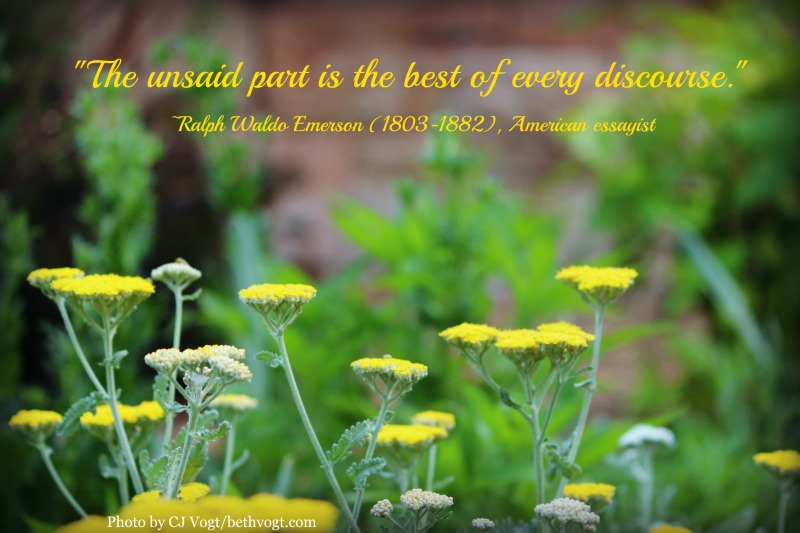
How often do we think listening to someone is all about hearing what they said?
Consider for a moment those conversations when the unspoken words were the most important part of of the dialogue. You’re talking or you’re listening — communicating — but the most important words that need to be said by you or the other person go unspoken.
Maybe if the other person is watching you closely, they pick up on your body language — the tilt of your head, the way you’ve turned away, the lift of an eyebrow — and they sense the silent undercurrent of the conversation.
And what about you? Are you talking, talking, talking — and missing what’s being said even when someone else goes silent?
Sometimes it’s not that the unsaid part of a conversation is the best part — it’s the absolute most vital part of the conversation. Miss it, and you miss the point altogether.
This is why casual conversations are okay over phone or text — but trying to talk out misunderstandings are not. You miss all the unsaid parts, and too often the misunderstanding grows. Conversation isn’t just what’s being said out loud — it’s also what’s being said in the silence behind your words.
In Your Words: When has silence made a difference in a conversation? How do you ensure you don’t miss the unsaid parts when you’re talking to someone?
[Tweet “In Others’ Words: Listening to the Silence #InOthersWords #lifequotes #communication”] [Tweet “”The unsaid part is the best of every discourse.” #quotes #RalphWaldoEmerson #communication”]Check out what’s coming up starting tomorrow, Wednesday, July 6!
Comments 4
Talking to someone involves the eyes as well as the mouth. And if someone isn’t giving eye contact, more than likely they’re not listening. I do worry about the kids of today not learning how to communicate. Like you so eloquently said, texting is not the same as talking!
Author
Agreed, Pat. Eye contact is vital, as is just watching a person so you don’t miss the visual cues they are giving you while they are talking. So much is said via body language, right? That’s why we writers are all about the action tags in dialogue. 🙂
Such a good post, Beth. In the age of mass communication via text, so much is missed by not being able to read body language, or to translate the silences. I learn so much by watching my boys, my husband, and others when I talk with them. Often what I’m reading/hearing guides my next words, or lack of words.
When I could still carry on a conversation, I tried to give my opponent…pardon me, fellow conversationalist…a few beats more than normal before answering, to make sure that he or she had nothing further to add.
Then I took a few seconds to compose my reply.
This was not a good thing. The ‘normal’ flow of conversation is a quicker give-and-take, and setting a different rhythm made folks uncomfortable.